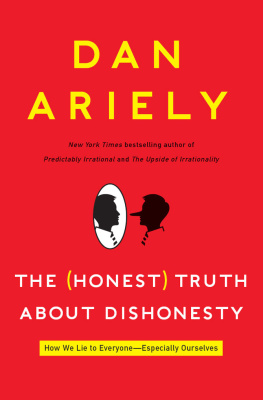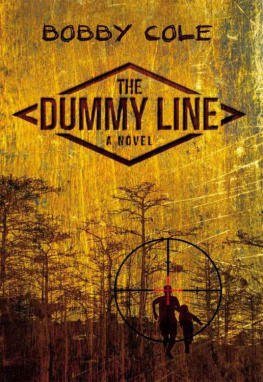
I have a lot of people to thank for assisting me in the writing of this book, in particular Dr. Gilbert M. Hefter, my professional collaborator, who offered invaluable insights as I tried to relate difficult aspects of the reference material to the drives of the id, as they are understood by professionals, who confront them on a daily basis with patients and clients.
Nanmathi Manion, who at the time of her assistance to me was studying for her doctorate in psychology at the University of Wisconsin, my alma mater, spent days and evenings at the library searching databases for materials pertinent to this book and then patiently interpreted them for me. By the time you read this, Nanmathi will probably have a Dr. prefix before her name. Her specialized field of study was in developmental psychology.
David Amodio, another student at Wisconsin, who was also nearing completion of his doctorate, searched simultaneously in other directions and helped relate current reference texts to the concept of the id, the Inner Dummy. David's specialty was social neuroscience, research that examines the neurological substrates of cognition and emotion involved in social behavior, a perfect background for this book.
Professor Irwin Goldman, a specialist in genetics in Wisconsin's Department of Horticulture, is the son of one of my oldest friends, Ted Goldman. Irwin was instrumental in referring Nanmathi and David to me.
My thanks also to Kurt Kleininger and Eva Winer of the PsycINFO User Service of the American Psychological Association, who studiously searched the vast databases covered by this service and helped direct me to key terminology that unlocked the doors. My thanks as well to Shirley Paolinelli who supervised the database searches of FIND/Svp and to Marie Dwyer who spent hours in libraries to confirm statistical and other data.
I am also grateful to Dr. Ava Carn-Watkins, assistant director of the Masters Program in Counseling Psychology at Northwestern University School of Education and Social Policy, who read the manuscript as I was completing it and thought that the structure we were creating and describing relating to the nature of the Inner Dummy might be a remindful benefit to professionals as well as to the average person curious about thoughts or actions they couldn't explain.
I would also like to thank the following who reviewed early stages of the manuscript and offered invaluable feedback: Ron Rattner; John Heilstedt; Heather McCune; Lynn Becker; Maritza Rivera; Bonnie Borgstrom; my sister Muriel Levie and her husband, Harold; and my uncle Phil Garb. My thanks as well to Lois Martyn, who is an unqualified Number Nine on the nurturance scale, kind to one and all, who read the manuscript as it progressed and told me what she didn't understand.
Then there was Larry Dore, a close friend who had retired from the corporate wars of business, who read the manuscript as I was writing and rewriting it, and gave me invaluable support.
It took a while for another friend of mine, Barry Berish, retired CEO of the Jim Beam Brands Co., and an officer of Fortune Brands, to get into the book, because as I pointed out in one of the chapters, Barry became clinically depressed only weeks following his retirement for no apparent reason. He became involved with the book in the closing days of my writing of the manuscript and relayed important information about how the book was affecting him and what more he thought I needed to do, including adding an epilogue.
Greg Schutz, who is president of a large tool company and another good friend, helped me alter the balance between the academic references and my interpretations of them.
Then there are the people who inspired me to write this book, who are admittedly candidates for the Inner Dummy Hall of Fame and admit it. They include among others, John McDonald III; Bob Schwartz; Sid Cohen, whom I write about in the book; and people like Howie Campbell, president of one of the largest distribution companies in Canada who climbed a ladder as he was moving from an old home to a gorgeous new home on a lake, to retrieve a lighting fixture with a value of less than $50, fell off the ladder, and broke his wrist. On a business ski trip with one of my oldest clients, In-Sink-Erator, Howie told me that the story wasn't quite true. But his protests came as he was arguing with a man behind the grill as to whether the french fries, costing $1.25, shouldn't come free with his grilled chicken sandwich. I told Howie I wouldn't put the story in any of the chapters, but I never mentioned the acknowledgments.
My thanks also to Donna Czukla, my long-suffering secretary of more than thirty years, who filled in whenever necessary during the writing and processing of the book and who knows the characteristics of my Inner Dummy as well as anyone.
My thanks as well to Steve Herkes, who worked long and hard to assist me with footnoting, references, and confirming other citations. My thanks also to Rick Asta, who coordinated legal matters for this book; to Dave Olsson and Frank Vallejo for helping me find a visual focus; to Mark Drespling, for helping alter the newest Web site (innerdummy.com); to Suzy Chudzik for the indexing; and to Stacy Gelman, Jennifer Jeffries, Sue Ortner, Molly Kunz, Judy Hubbard, Bud Drago, Ryan Tully, Denise Naquin, Nicole Harberts, Kenton Barello, Irene Bedzis, Melissa Levie, and others who were helpful with specific aspects of the writing, research, and the positioning. To my son, Andy, who works for Microsoft, I am grateful for some of the T-shirt ideas used in the Freud chapters, and to my other son, Barry, who in his work with the police department of a high-income Chicago suburb, understood at once the concept of an Inner Dummy.
Finally, my deepest gratitude goes to Jonathan Kurtz of Prometheus Books for his encouragement in the writing of this book. And to Steven L. Mitchell and Mary A. Read for their help in its editing.


David L. Weiner (left) is a late blooming (as he puts it) popular psychology writer. His previous book was Brain Tricks: Coping with Your Defective Brain (Prometheus Books). He has also been a top business consultant for four decades, dealing with business personnel at all levels, including CEOs, who have wrestled with their Inner Dummies.
Gilbert M. Hefter, M.D. (right), is Associate Professor of Clinical Psychiatry at Northwestern University Medical School. He is on the medical staff and is a former Director of Clinical Services of the Department of Psychiatry at Northwestern Memorial Hospital in Chicago. He is a practicing clinical psychiatrist.

Ackerman, Diane. A Natural History of the Senses. New York: Vintage Books, 1991.
Andreasen, Nancy C. The Broken Brain: The Biological Revolution in Psychiatry. New York: Harper & Row, 1984.
Ardrey, Robert. The Territorial Imperative: A Personal Inquiry into the Animal Origins of Property and Nations. New York: Kodansha International, 1996.
Barkow, Jerome H., Leda Cosmides, and John Tooby, eds. The Adapted Mind: Evolutionary Psychology and the Generation of Culture. Oxford: Oxford University Press, 1992.
Barret, Karen C. A Functionalist Approach to Shame and Guilt. In
Next page














